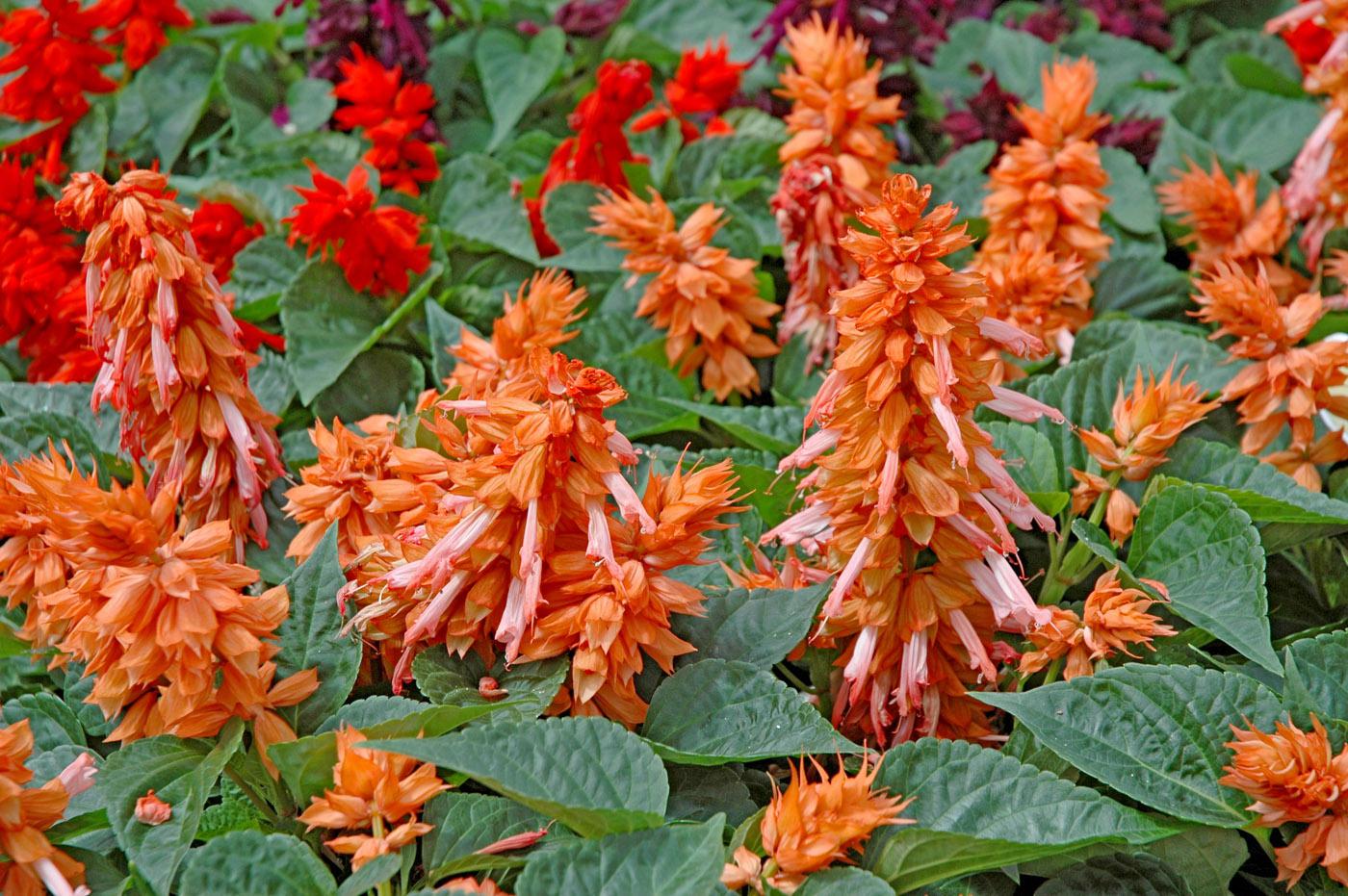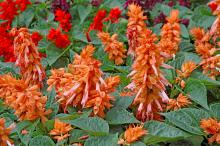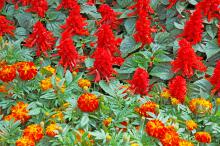Information Possibly Outdated
The information presented on this page was originally released on May 11, 2006. It may not be outdated, but please search our site for more current information. If you plan to quote or reference this information in a publication, please check with the Extension specialist or author before proceeding.
Picante, Sizzler are hot salvias for garden
By Norman Winter
MSU Horticulturist
Central Mississippi Research & Extension Center
Scarlet sage is an old-fashioned plant has come out this year with new colors and varieties that will ensure its popularity for years to come.
Scarlet sage is an annual salvia known botanically as Salvia splendens. One new group that has caught my attention is the Picante series. This one seems to send up multiple branches at a record pace. It also comes in some weird colors that make the term “scarlet” seem obsolete.
But when I see a massed planting of a red variety like the Sizzler, I succumb to its beauty as well. One thing I really appreciate about these workhorse flowers is that those planted now will double in size by fall. They put on a show that is really hard to beat.
Color from spring through frost means this annual form of salvia is an exceptional buy and ranks as a stalwart performer. Its spiky texture is most welcome in a garden world dominated by round flowers.
Scarlet sage can still be planted with great success if you're lucky enough to find any remaining at the local garden center. The ideal site would get morning sun and afternoon shade. The soil should be very well drained. Plant on raised beds or amend heavy soils with the addition of compost or humus.
While preparing the soil, incorporate two pounds of a slow-release, 12-6-6-fertilizer per 100 square feet of planting area. Space the plants 10 to 12 inches apart, planting at the same depth they are growing in the container.
Water deeply once a week, particularly during long dry periods. If your area has had rainfall like mine, water hasn't been an issue this spring. In fact, I'm considering using a canoe to get to my plants.
Adding a good layer of mulch will reward the gardener with happier plants as the mulch keeps the root zone cooler and prevents moisture from quickly evaporating. Prune spent flowers to encourage branching and blossoms. This will be important for late summer and fall displays.
Feed a month after planting with a light application of fertilizer and again every six to eight weeks through September.
Mass plant the salvia for the best landscape impact. The scarlet sage comes in almost any color, including two tones, so it helps to know your color combinations. Try a red variety like Vista Red in front of bush allamanda or with yellow marigolds.
Try lavender to purple forms with two-toned petunias of the same colors or underneath cleome of the same color. They are also very well suited to large, mixed containers.
Your local garden center may have other varieties like Vista Red, Red Hot Sally, St. John's Fire or Flare, but don't fret. The Salsa series is popular because of its bi-colored varieties. Another unique and beautiful variety is Sangria, which features white to creamy-yellow bracts and a scarlet tube floret. Whatever you choose, just be sure to plant them soon.
Hummingbird lovers will relish the fact that these acrobatic visitors find the scarlet sage among the most delectable plants in the garden. What could be better -- beauty, toughness and scores of ruby-throated hummingbirds, too.
You can have all of this plus a sense of "green thumb satisfaction" when you grow the scarlet sage in your garden.




